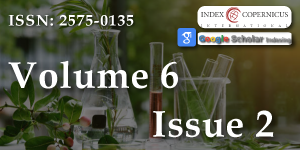Importance of BLUP method in plant breeding
Main Article Content
Abstract
Introduction: The most desirable linear neutral prediction (BLUP) is a standard method for estimating the random effects of a hybrid model. This approach was originally developed in animal breeding to estimate breeding values and is now widely used in many fields of research.
The main practical advantages of using REML/BLUP are:
It allows the comparison of individuals or species over time (generation, year) and space (location, block). Possibility of simultaneous correction of environmental effects, estimation of variance components, and prediction of genetic values.
The best BLUP prediction method, which estimates the averages with high accuracy, especially in mixed models, is also used to evaluate multi-environment experimental data (MET).
Blup is one method is statistical. Pedigree-based blup method.
Materials and methods: The BLUP method achieves this goal by combining phenotypic data and information on pedigree relationships through an index, known as family index selection. This index, which is estimated based on the coefficient of intra-class correlation, exploits the relationships of individuals within a family compared to other families in the population.
Results: The results: show that BLUP has good prediction accuracy compared to other methods. Pedigree-based BLUP method can increase selection yield in production-related traits in P. zonale or shelf life of D. caryophyllus L.
Article Details
Copyright (c) 2022 Tajalifar M, et al.

This work is licensed under a Creative Commons Attribution 4.0 International License.
The Journal of Plant Science and Phytopathology is committed in making it easier for people to share and build upon the work of others while maintaining consistency with the rules of copyright. In order to use the Open Access paradigm to the maximum extent in true terms as free of charge online access along with usage right, we grant usage rights through the use of specific Creative Commons license.
License: Copyright © 2017 - 2025 |  Open Access by Journal of Plant Science and Phytopathology is licensed under a Creative Commons Attribution 4.0 International License. Based on a work at Heighten Science Publications Inc.
Open Access by Journal of Plant Science and Phytopathology is licensed under a Creative Commons Attribution 4.0 International License. Based on a work at Heighten Science Publications Inc.
With this license, the authors are allowed that after publishing with the journal, they can share their research by posting a free draft copy of their article to any repository or website.
Compliance 'CC BY' license helps in:
| Permission to read and download | ✓ |
| Permission to display in a repository | ✓ |
| Permission to translate | ✓ |
| Commercial uses of manuscript | ✓ |
'CC' stands for Creative Commons license. 'BY' symbolizes that users have provided attribution to the creator that the published manuscripts can be used or shared. This license allows for redistribution, commercial and non-commercial, as long as it is passed along unchanged and in whole, with credit to the author.
Please take in notification that Creative Commons user licenses are non-revocable. We recommend authors to check if their funding body requires a specific license.
Sharifi P, Abbasian A, Mohaddesi A. Evaluation the Mean Performance and Stability of Rice Genotypes by Combining Features of AMMI and BLUP Techniques and Selection Based on Multiple Traits. 2021;2:163-179.
Piepho HP, Mo¨hring J, Melchinger AE. BLUP for phenotypic selection in plant breeding and variety testing. Springer. 2008;161: 209-228.
Molenaar H, Boehm R, Piepho HP. Phenotypic Selection in Ornamental Breeding: It's Better to Have the BLUPs Than to Have the BLUEs. Front Plant Sci. 2018 Nov 5;9:1511. doi: 10.3389/fpls.2018.01511. PMID: 30455707; PMCID: PMC6230591.
Deon Vilela de Resende M. Software Selegen-REML/BLUP: a useful tool for plant breeding. Crop Breed Appl Biotechnol. 2016;16:330-339.
Nishio M, Satoh M. Genomic best linear unbiased prediction method including imprinting effects for genomic evaluation. Bio Med Central. 47:1-10

